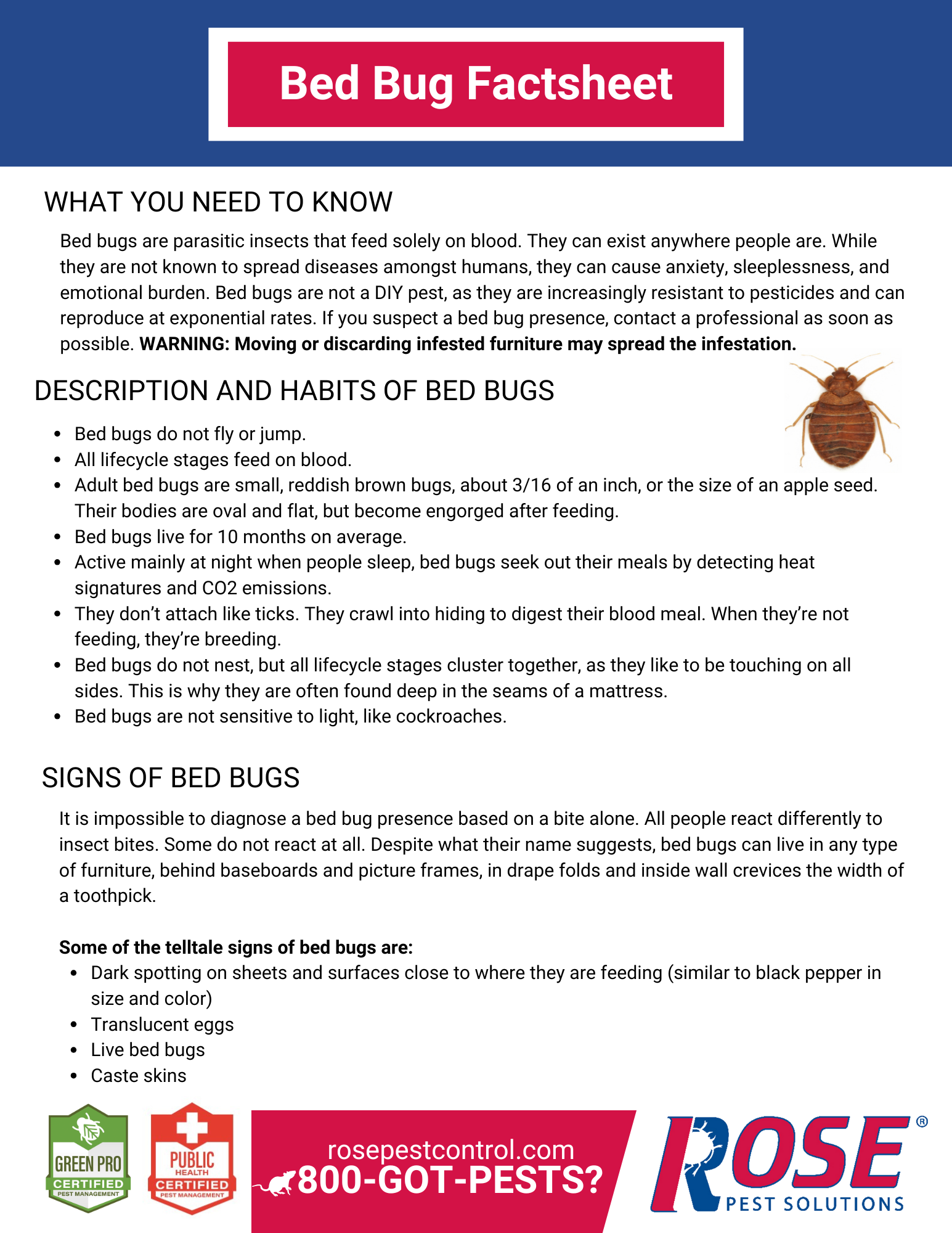The smart Trick of Bed Bug Services That Nobody is Discussing
Table of ContentsAll About Bed Bug ServicesSome Known Details About Bed Bug Services Facts About Bed Bug Services RevealedBed Bug Services for Dummies
A thorough bed bug inspection by experts is much more than a simple walkthrough and relies on expertise. Bed bugs are small, elusive, and adept at hiding that seek cracks, crevices, and furniture seams. Because of their secretive nature, detailed examination is necessary to accurately locate and quantify infestations. Professional inspectors rely on specialized equipment, systematic procedures, and experience to locate pests effectively, reducing the risk of escalation.The first step in the inspection process involves knowing the habits and life cycle of bed bugs. Bed bugs belong to the order Hemiptera and progress through eggs, several nymphs, and adult stages. Adults are around five millimeters long, flat, reddish-brown, and wingless with slender legs and antennae. Their mouthparts are designed to pierce skin and extract blood, often causing red, itchy welts on hosts. Knowing these traits enables detection of likely areas for bed bug activity.
Early detection is vital for stopping the problem from spreading. Professionals look for specific indicators such as tiny ink-like droppings, molted skins, and egg clusters (Bed Bug Services). Female bed bugs are capable of laying hundreds of eggs, leading to rapid infestations if unchecked. Evidence of molted skins or eggshells indicates active infestation and requires prompt inspection
Preparing for an inspection involves careful organization. Inspectors often suggest tidying up spaces to allow full access, which improves access to furniture and baseboards. Bedding and linens may be washed in hot water and dried on high heat, and then stored in sealed bags to prevent re-infestation. Wall decor, mirrors, and pictures should be taken down to inspect behind frames. Vacuuming furniture and floors can remove loose pests, and vacuum bags should be discarded carefully to avoid spreading.
The Buzz on Bed Bug Services
The inspection itself is comprehensive and careful. Inspectors start with beds and adjacent furniture, paying attention to edges, seams, and potential hiding spots. Upholstered furniture, including couches and chairs, is inspected thoroughly, including underneath and inside cushions. Baseboards, moldings, the edges of wall-to-wall carpeting, electrical outlets, closets, and storage areas are methodically checked, as these can be key areas for infestation.
Specialized tools help inspectors find hidden pests. Flashlights, magnifying lenses, multi-tools, and mirrors allow examination of tight spaces. Monitoring devices like interceptor traps or sticky pads aid in identifying infestation trends. Some companies use detection dogs, which accurately identify active infestations, distinguishing them from non-active traces.

Meticulous documentation plays a critical role. Inspectors document all signs, infestation levels, and suggested measures. This provides a reference for follow-ups and offers proof of inspection. Residents are often asked to avoid view website disturbing potential infestation signs, as this prevents loss of critical information.
After inspection, a monitoring plan may be put in place to confirm the presence of bed bugs and track activity. Continuous monitoring detects reinfestation, and interviews with household members helps pinpoint problem areas. Cooperation from residents ensures accuracy.
Bed Bug Services Can Be Fun For Everyone

Professional inspections offer a higher level of accuracy than DIY attempts. Trained inspectors recognize early evidence of bed bugs, ensure the correct pest is addressed, and provide certainty.
Bed bug inspections are particularly important in places where infestations spread easily. Inspectors assess all connected areas to identify potential spread (Bed Bug Services). This prevents escalation and reduces treatment costs
In summary, a professional bed bug inspection involves understanding bed bug biology, preparing the space, conducting systematic inspections, using specialized tools, documenting findings, and implementing monitoring protocols. Each step supports early detection, informs treatment, and reduces future risk.
See This Report about Bed Bug Services
